We’ve not covered many motorcycles yet in “Ad Break,” which seems like an oversight. After all, some of the most spectacular and interesting motorised vehicles have been motorcycles, and cars haven’t had a monopoly on great print ads either: consider “You meet the nicest people on a Honda”, or that incredible Harley-Davidson ad with the empty road, motorcycle, and the caption, “Somewhere on an airplane a man is trying to rip open a small bag of peanuts.”
This advert for the BMW K1 isn’t quite as memorable, but it has the same kind of confident humour as the brand’s car ads from the 1990s. Positioned between a pair of Ford Granadas in the directors’ car park, the K1 looks like a vehicle from another world.

In fact, we reckon BMW’s ad agency probably picked Granadas because the K1 would still have shown up the brand’s contemporary 5 Series as looking a bit unimaginative, and that would have led to some awkward silences between the motorcycle and automobile divisions in the canteen at head office.
The K1 was among the first motorcycles to fully enclose most of its mechanicals. Fairings had been around for decades, but the K1’s bodywork was almost shrink-wrapped around the frame. The Ducati Paso had actually done something similar a couple of years before the K1’s 1988 launch, and indeed the Bimota DB1 (like the Paso, the work of genius motorcycle designer Massimo Tamburini) had kicked things off in 1985.
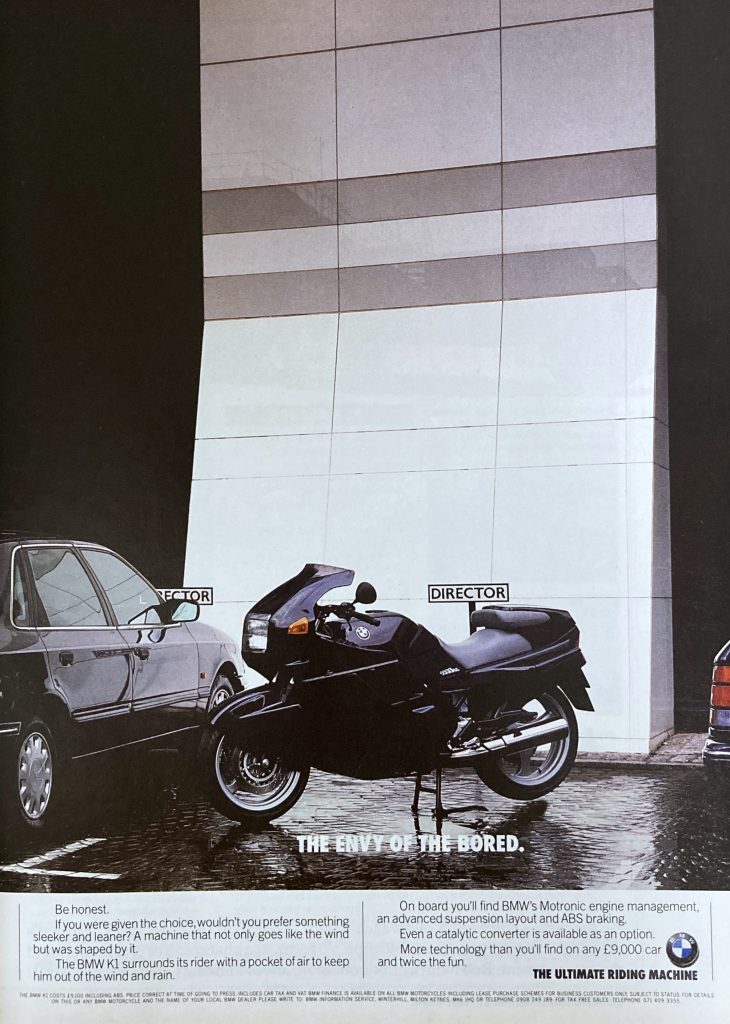
But the BMW went one step further by wrapping nearly half the front wheel in an aerodynamic mudguard too, while the raised pillion seat was also part of the aero package. Part of the motivation for all this aero was to make up for the fact that just as German manufacturers limited the top speed of cars to 155mph, German motorcycle makers had a self-imposed 100bhp limitation on their bikes. The K1 made 25 horses less than, say, a 1988 Suzuki GSX-R 1100, so it had to make up its performance some other way.
This being BMW, the K1 was also packed with the kind of tech that wouldn’t infiltrate most motorcycles for a good deal longer, from an emissions-friendly catalytic converter to wet-road friendly ABS brakes.
It was not what you’d call an enormous success. BMW sold fewer than 7000 units in six years, with customers put off by the bike’s unusual looks, and a tendency for the fairing to trap the 1-litre inline four’s heat and radiate it to the rider’s legs. It was also heavy, at 234kg dry, compared to the similarly faired (albeit V-twin) Paso’s 195kg weight.
Still, we like to think a few of those 7000-or-so bikes went to a handful of company directors who couldn’t resist the idea of showing up the decidedly more tedious transport of their colleagues before a board meeting. It’d probably have the same effect today, as nothing that followed the K1 has ever really looked quite like it.
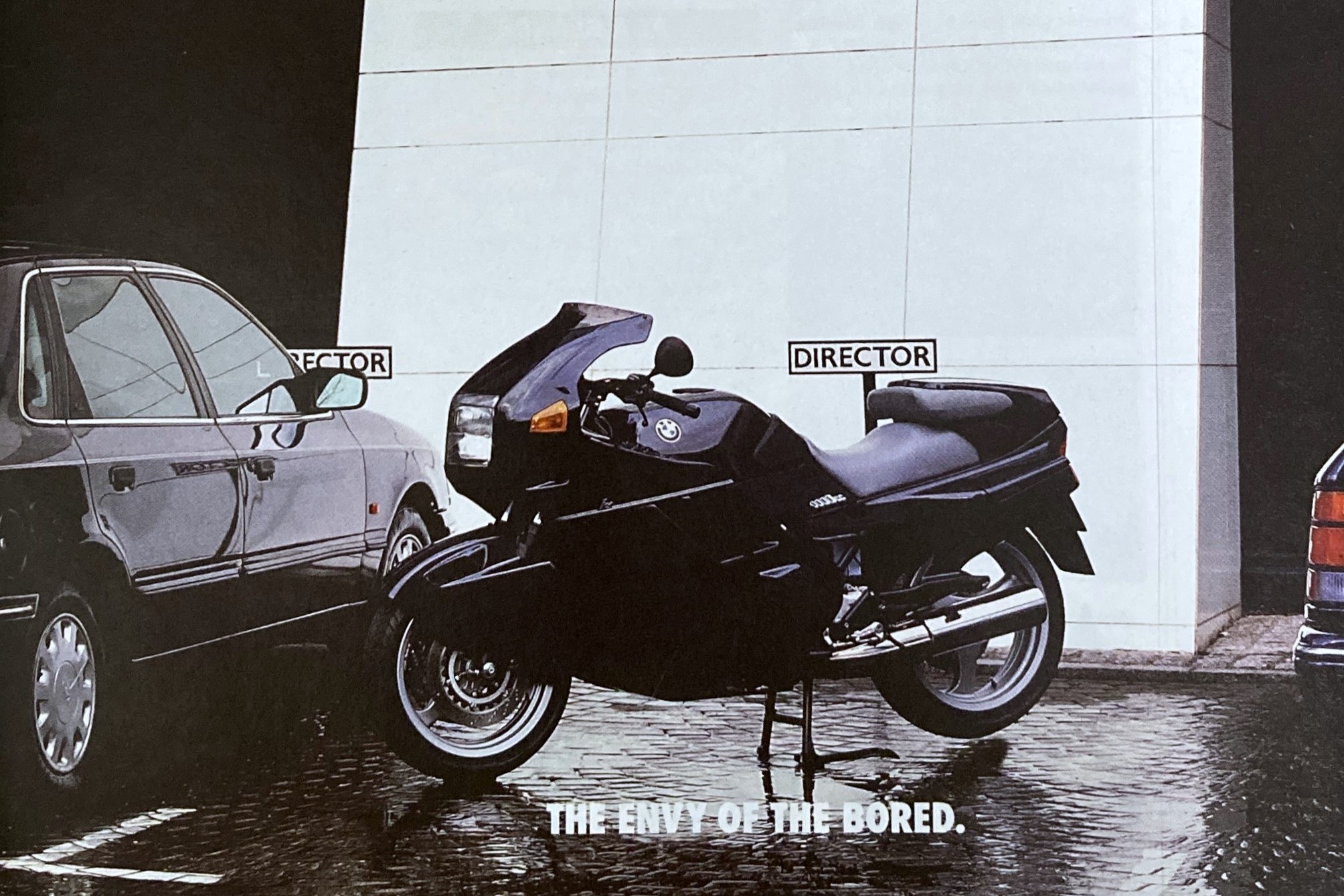
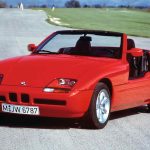


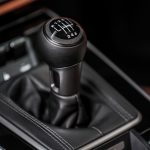
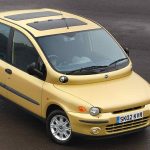
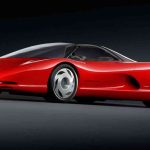
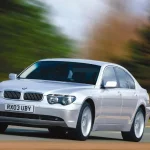
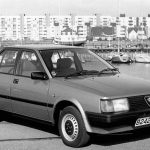

Look at the Vincent Black Prince and see where they got their inspiration.